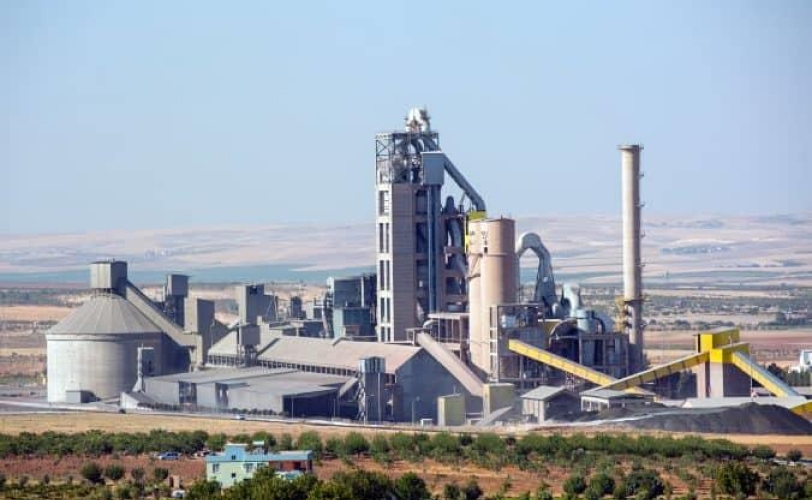The global construction industry is expanding rapidly, driving a growing demand for cement. However, traditional large-scale cement plants require significant investment and infrastructure. This has led to the rise of the Mini Cement Plant, a cost-effective and sustainable alternative for small and medium-scale cement manufacturers. These compact plants offer an efficient way to produce high-quality cement while reducing operational costs and environmental impact.
What is a Mini Cement Plant?
A Mini Cement Plant is a small-scale production facility designed to manufacture cement efficiently with lower investment and energy consumption. Unlike large cement plants that produce millions of tons annually, mini cement plants typically have a production capacity ranging from 50 TPD (tons per day) to 500 TPD. These plants cater to local markets and smaller construction projects, making them an excellent choice for entrepreneurs and investors looking to enter the cement industry with a lower initial investment.
Advantages of Mini Cement Plants
1. Lower Investment and Operational Costs
One of the primary benefits of a Mini Cement Plant is its affordability. The cost of setting up a mini plant is significantly lower than that of a conventional large-scale plant. The simplified production process and lower energy consumption result in reduced operational costs, making it an attractive option for small-scale cement manufacturers.
2. Energy Efficiency and Sustainability
Mini cement plants are designed to operate with less energy consumption, making them more sustainable than traditional cement plants. Many of these facilities incorporate modern energy-saving technologies, such as vertical shaft kilns (VSKs), which enhance efficiency and reduce carbon emissions.
3. Flexibility in Location and Production
A key advantage of mini cement plants is their flexibility in terms of location. Unlike large plants that require vast areas and infrastructure, mini plants can be set up closer to raw material sources and construction sites, reducing transportation costs and supply chain inefficiencies.
4. Local Market Focus
Mini cement plants primarily cater to local and regional markets, ensuring a steady supply of cement for small-scale infrastructure projects, rural construction, and independent contractors. This localized approach reduces dependence on large corporations and encourages regional economic growth.
5. Environmental Benefits
Due to their smaller scale and energy-efficient technologies, mini cement plants generate fewer greenhouse gases compared to large cement factories. Additionally, they can utilize alternative fuels and raw materials, such as industrial waste, reducing overall environmental impact.
Key Components of a Mini Cement Plant
1. Raw Material Handling
The process begins with raw material extraction and crushing. Materials like limestone, clay, iron ore, and gypsum are crushed into small particles to create a uniform raw mix.
2. Proportioning and Grinding
The crushed raw materials are then weighed and mixed in the correct proportions. A ball mill or vertical roller mill grinds them into fine powder, which serves as the raw meal for cement production.
3. Clinker Production
The ground raw meal is fed into a vertical shaft kiln (VSK) or rotary kiln, where it undergoes calcination at high temperatures to produce clinker, the key ingredient in cement. Mini cement plants commonly use VSK technology, which is more energy-efficient than traditional rotary kilns.
4. Clinker Cooling and Storage
After the calcination process, the hot clinker is cooled using air or water spray and then stored in silos for further processing. Proper cooling helps maintain the quality and strength of the clinker.
5. Cement Grinding and Packing
The clinker is mixed with gypsum and other additives before being ground into fine cement powder. The final cement product is then packed in bags or bulk containers and transported for distribution.
Why Invest in a Mini Cement Plant?
Investing in a Mini Cement Plant offers numerous benefits, especially for entrepreneurs and small businesses looking to enter the cement industry. Here’s why a mini plant could be a smart investment:
1. High Demand for Cement
The demand for cement is consistently rising, driven by urbanization, infrastructure development, and increasing construction projects. Mini cement plants can capitalize on this demand by supplying cement to local and niche markets.
2. Faster Setup and Quick Returns
Compared to large cement plants, mini plants have a shorter setup time, allowing investors to start production quickly and generate revenue faster.
3. Government Incentives and Subsidies
Many governments offer incentives for setting up small and medium-scale industries (SMEs), including tax benefits, subsidies, and financing options, making it easier to establish a mini cement plant.
4. Job Creation and Economic Growth
Mini cement plants contribute to local job creation and support regional economic growth by fostering employment opportunities and boosting related industries, such as logistics and construction.
5. Scalability and Expansion Opportunities
Starting with a mini cement plant allows businesses to scale production gradually. As demand grows, manufacturers can expand capacity or upgrade technology to improve efficiency and output.
Challenges of Mini Cement Plants
While mini cement plants offer significant advantages, there are some challenges to consider:
- Limited Production Capacity – Mini plants are ideal for localized supply but cannot match the output of large-scale cement plants.
- Market Competition – Competing with established cement brands may require effective marketing and strong distribution networks.
- Raw Material Availability – Access to consistent raw material supply is crucial for uninterrupted production.
- Technology Upgradation – Keeping up with technological advancements is necessary to maintain efficiency and competitiveness.
Conclusion
The Mini Cement Plant is an efficient, cost-effective, and sustainable solution for cement production, particularly for emerging businesses and local markets. With lower investment costs, energy efficiency, and environmental benefits, these plants provide an excellent opportunity for entrepreneurs and investors looking to tap into the growing cement industry.
As construction and infrastructure projects continue to rise worldwide, mini cement plants are set to play a vital role in meeting regional demand and promoting economic growth. Investing in a mini cement plant is not only a profitable venture but also a step toward sustainable cement manufacturing.
